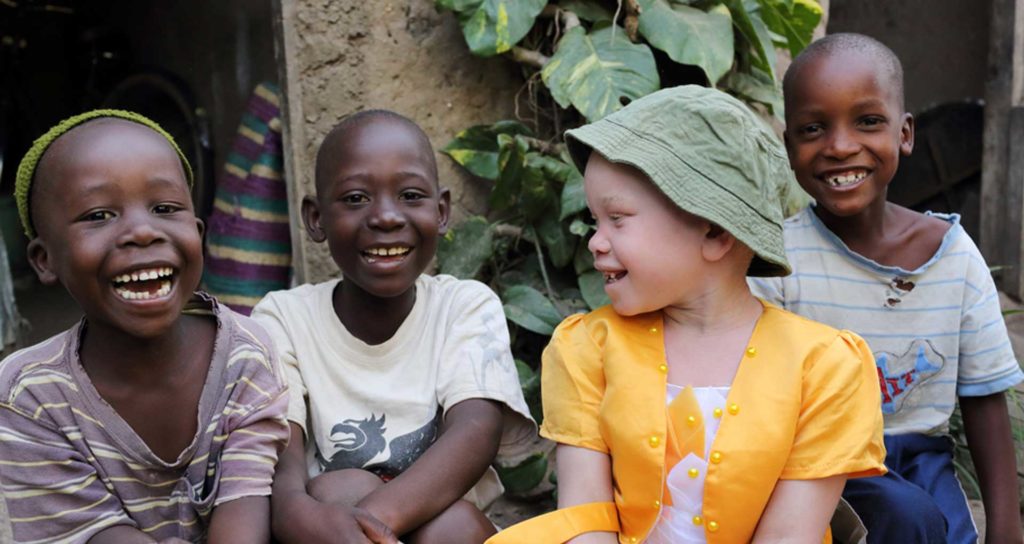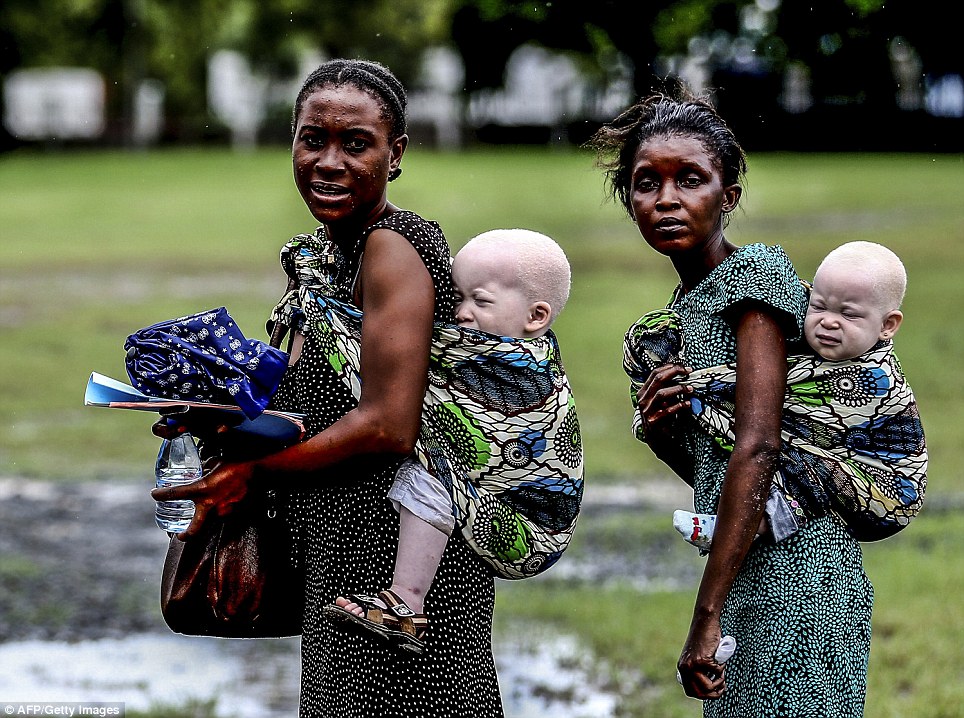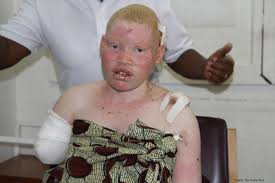How the Media Can Help Protect People with Albinism – A Tanzanian Case Study
SPOTLIGHT, AFRICA, HEALTH, UNITED NATIONS, MEDIA, 19 Jun 2017

Albinism is an inherited condition that affects the pigment of the eyes, hair and skin. Shutterstock
13 Jun 2017 – Albinism is a rare genetic condition which affects the pigment in the eyes, hair and skin. In the US about 1 person in 17,000 has albinism. In Africa the prevalence is estimated to range between 1 in 1100 to 1 in 15,000. But in Tanzania the rate is much higher – about 1 in every 1,400.
The most common and most severe type in sub-Saharan Africa is ocular albinism which gives people white hair, pink skin, low vision or blindness and a greater susceptibility to skin cancer.
People with albinism in Africa face a range of prejudices and social stigmas. They are often dismissed as belonging to another race, or as ghosts or spirits. My research confirms this.
The research looked at the role of the media in protecting the human rights of people with albinism. The media has the power to perpetuate misconceptions on albinism. It can also break down these prejudices, and to play a positive role in protecting people with albinism against abuse.

Sorry state of affairs: Sometimes parents are forced to give up their beloved offspring because of albinism. Daily Mail.
Murders
In East Africa, adults and children with albinism face discrimination and human rights violations driven by beliefs rooted in witchcraft that albino body parts bring wealth and fortune.
Many are murdered for body parts, including infants and babies.
Most of the attacks have taken place in Tanzania. Murders and attempted attacks, though in smaller numbers, have also been documented in Burundi, Kenya, Swaziland, Guinea, Nigeria, South Africa, Congo, Zambia, Namibia, Ivory Coast and Burkina Faso.
My research looked at media reports published between 2008 and 2011 on albinism and albino murders in Tanzania. I published a dataset of 563 media reports in both English and Swahili from Tanzanian national newspapers.
The data showed that the Tanzanian press portrayed and explained violent attacks against persons with albinism in four ways. That they were:
- criminal activity,
- cultural practices,
- a socio economic phenomenon,
- a human rights issue.
Discussing the attacks as cultural practices and economic activities contributes to the spread of myths and stereotypes and shows how to make money out of violence, which makes life harder and more dangerous for people with albinism.
Media reporting on these attacks as crimes that can lead to a death sentence is important in reducing the violence. The key message should be that people with albinism are humans who have rights so the whole community should treat them well and protect them from harm.
The majority of the articles recognised people with albinism as rightful members of society, using phrases such as “our fellow human beings” and “our fellow countrymen and women, our own kith and kin”. They also reported strong support from political leaders for people with albinism.
The articles urged protection for people with albinism and advocated fighting discrimination against them by using the law to identify and prosecute their attackers. They also advocated political activism to end the discrimination.
Many of the articles attacked the myths surrounding albinism, emphasising that witchcraft cannot deliver wealth.
But not all the media coverage was helpful. Some articles contributed to the spread of the myths and rumours about albinism by irresponsibly reporting on the monetary value of various body parts.
In some cases, the language used by the media failed to fully highlight the challenges affecting people with albinism. For example, the Swahili term for persons with albinism, watu wenye ulemavu wa ngozi (people with skin-disability) was regularly used. This description fails to recognise the fact that people with albinism also need proper eye care.
What can be done?
There is an urgent need to address the violence faced by this vulnerable group. Public health awareness is an important first step. And adequate health services for skin and vision disabilities should be prioritised.
Putting out messages that counter the stigma against people living with albinism is also important, as is access to education.
But interventions must take into account their human rights. For example, putting children with albinism in camps may protect their right to life and security, but it restricts their rights to freedom of movement, and family life.
__________________________________________
More:
Africa needs a health policy to help people with albinism
Being black in a white skin: students with albinism battle prejudice
Taunts and bullying drive children with albinism from Tanzanian schools
Grave robbers and killing sprees: living with albinism in East Africa
 Jean Burke is a senior lecturer in social work, Australian Catholic University.
Jean Burke is a senior lecturer in social work, Australian Catholic University.
Republish our articles for free, online or in print, under Creative Commons license.
Go to Original – theconversation.com
DISCLAIMER: The statements, views and opinions expressed in pieces republished here are solely those of the authors and do not necessarily represent those of TMS. In accordance with title 17 U.S.C. section 107, this material is distributed without profit to those who have expressed a prior interest in receiving the included information for research and educational purposes. TMS has no affiliation whatsoever with the originator of this article nor is TMS endorsed or sponsored by the originator. “GO TO ORIGINAL” links are provided as a convenience to our readers and allow for verification of authenticity. However, as originating pages are often updated by their originating host sites, the versions posted may not match the versions our readers view when clicking the “GO TO ORIGINAL” links. This site contains copyrighted material the use of which has not always been specifically authorized by the copyright owner. We are making such material available in our efforts to advance understanding of environmental, political, human rights, economic, democracy, scientific, and social justice issues, etc. We believe this constitutes a ‘fair use’ of any such copyrighted material as provided for in section 107 of the US Copyright Law. In accordance with Title 17 U.S.C. Section 107, the material on this site is distributed without profit to those who have expressed a prior interest in receiving the included information for research and educational purposes. For more information go to: http://www.law.cornell.edu/uscode/17/107.shtml. If you wish to use copyrighted material from this site for purposes of your own that go beyond ‘fair use’, you must obtain permission from the copyright owner.
Read more
Click here to go to the current weekly digest or pick another article:
SPOTLIGHT:
- Does Gandhi Still Matter? Yes, and Rajmohan Gandhi Explains Why
- The Responsibility of Intellectuals in the Age of Fascism and Genocide
- Spheres of Security versus Spheres of Influence: A Reconsideration of Great Power Boundaries
AFRICA:
- Let the Sudanese People Walk toward Peace
- Sudan Genocide Emergency
- Blood Visible from Space in Sudan Shows Evidence of Darfur Genocide: Analysts
HEALTH:
- FDA Orders COVID ‘Vaccine’ Makers Pfizer and Moderna to Warn Public about Heart Damage Risk
- U.S. Terminates Funding for Polio, H.I.V., Malaria and Nutrition Programs Around the World
- Autism, Made in the USA
UNITED NATIONS:
- First 'International Day against Unilateral Coercive Measures'
- Israeli Raids and Settler Attacks Deepen Humanitarian Crisis in West Bank
- The UN Cannot Save Us so We Need a World Parliament Now
MEDIA:
